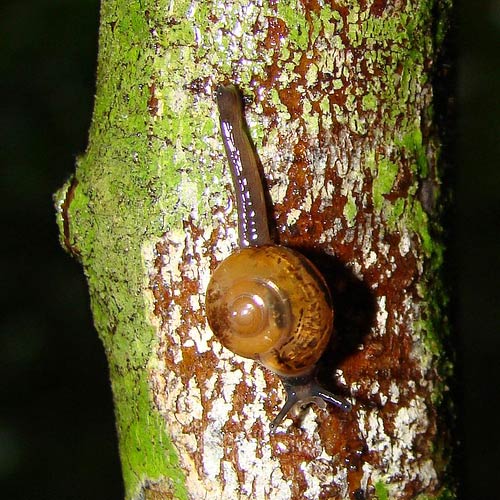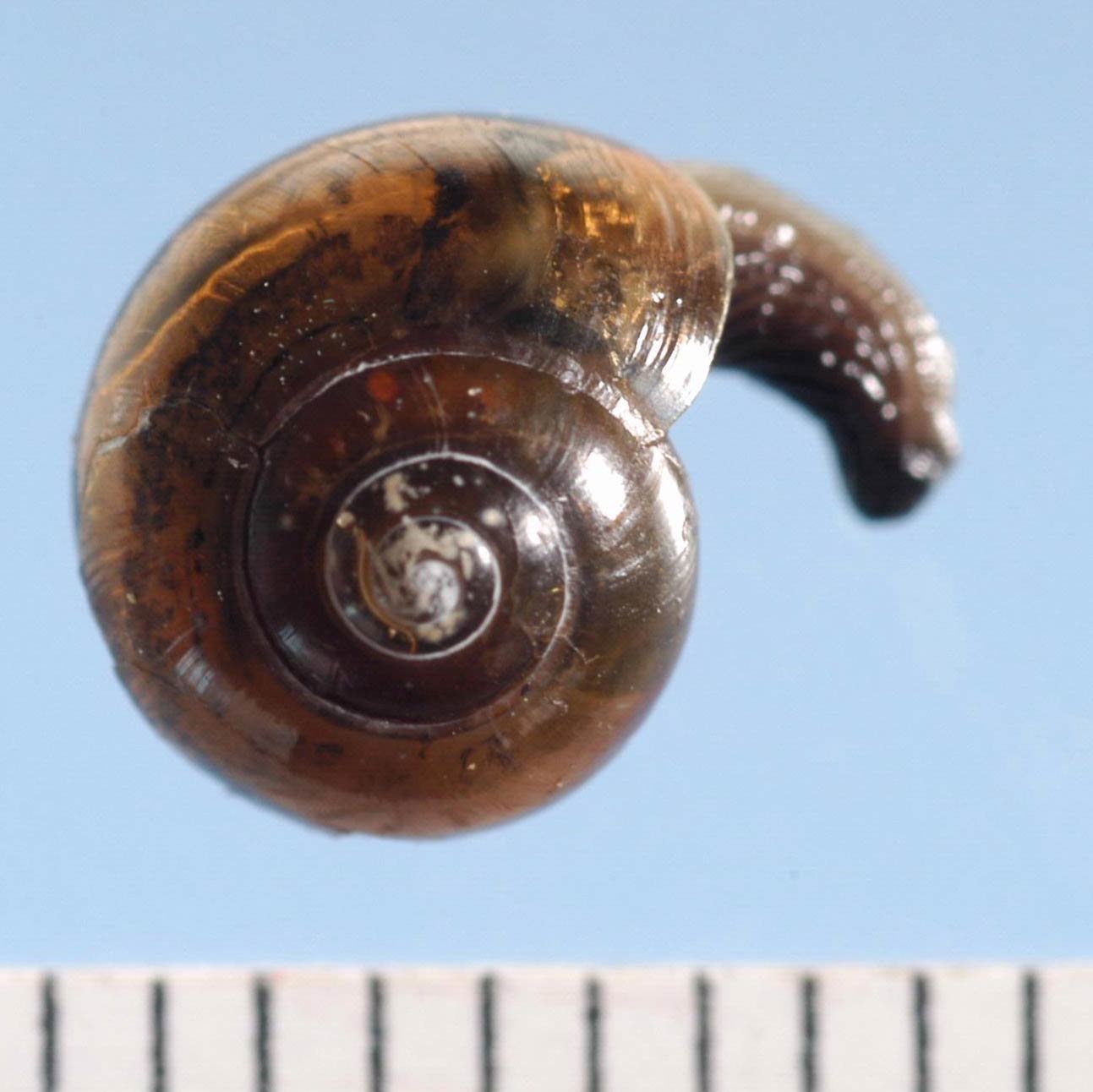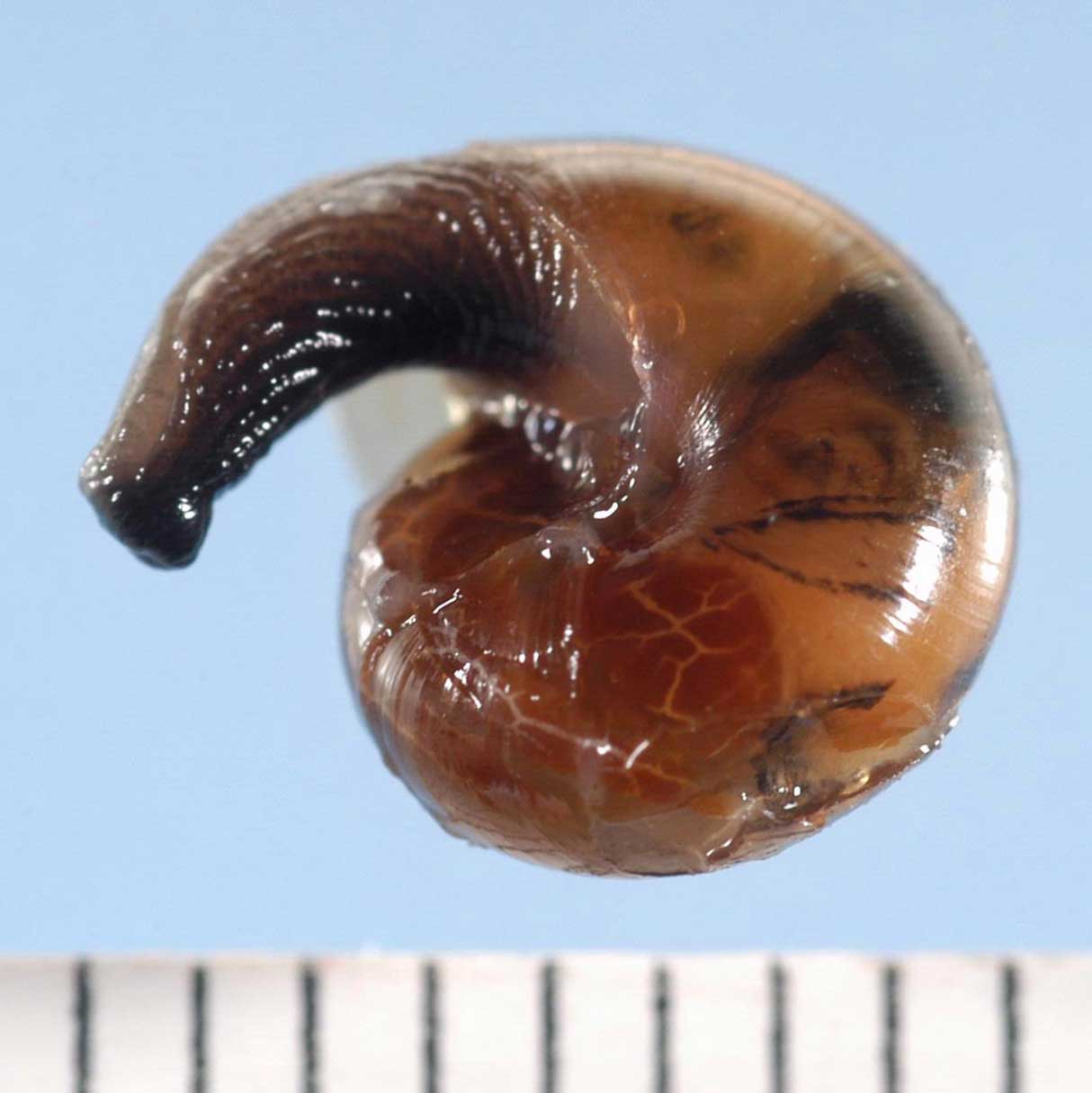Ovachlamys fulgens
|
Ovachlamys fulgens. (Photo: © Robert Pilla, Flickr.com) |
|
Ovachlamys fulgens: note horn-like structure on the tip of the tail. (Photo: © D. Robinson, USDA-APHIS-PPQ) |
|
Ovachlamys fulgens. (Photo: © J. Lotz, FL DACS) |
|
Ovachlamys fulgens. (Photo: © J. Lotz, FL DACS) |
Family
Chronidae
Species
Ovachlamys fulgens (Gude, 1900)
Common name
Jumping snail
Description
The jumping snail's shellShell:
A hard, inflexible, calcareous or chitinous structure that vary in size and may either completely encasing the animal, covering some part of it or be internal.
is 5-7 mm wide, with 4-5 whorlsWhorls:
Pleural of whorl. A whorl is a complete spiral turn/growth of the shell of a mollusc. The whorls are counted from the apex outwards.
. The footFoot:
The muscular organ on the undersurface of the body of a mollusc upon which the animal rests or uses to crawl.
of the snail is tripartiteTripartite:
Having three distinct section/regions.
. It also has a characteristic horn near the tip of its tail that it often uses to catapult itself away from perceived danger.
Native range
Japan
Distribution
North America:
- U.S.: Florida
South and Central America: Costa Rica
Pacific Islands: Hawaiian Islands
Caribbean: Trinidad
Asia: Japan
Ecology
This snail has been recorded to be a pest of ornamental plants such as orchids, Heliconia sp. and Dracaena sp. The jumping snail can live for as long as 9 months. It has the potential to self-fertilize and begin oviposition as soon as 42 days post hatching, with a total clutch size of 165 eggs throughout its life.
References
Barrientos 1998Barrientos 1998:
Barrientos, Z. 1998. Life history of the terrestrial snail Ovachlamys fulgens (Stylommatophora: Helicarionidae) under laboratory conditions. Revista de Biología Tropical 46: 369-384.; Barrientos 2000Barrientos 2000:
Barrientos, Z. 2000. Population dynamics and spatial distribution of the terrestrial snail Ovachlamys fulgens (Stylommatophora: Helicarionidae) in a tropical environment. Revista de Biología Tropical 48: 71-87.; Cowie et al. 2008Cowie et al. 2008:
Cowie, R.H., K.A. Hayes, C.T. Chuong, T.Tran and W.M. Meyer III. 2008. The horticultural industry as a vector of alien snails and slugs: widespread invasions in Hawaii. International Journal of Pest Management 54(4): 267-276.; Cowie et al. 2009; Robinson and Slapcinsky 2005Robinson and Slapcinsky 2005:
Robinson, D.G. and J. Slapcinsky. 2005. Recent introductions of alien land snails into North America. American Malacological Bulletin 20: 89-93.; Stange 2004Stange 2004:
Stange, L.A. 2004. Snails and Slugs of Regulatory Significance to Florida. Pest Alert. Florida Department of Agriculture and Consumer Services: Division of Plant Industry.





